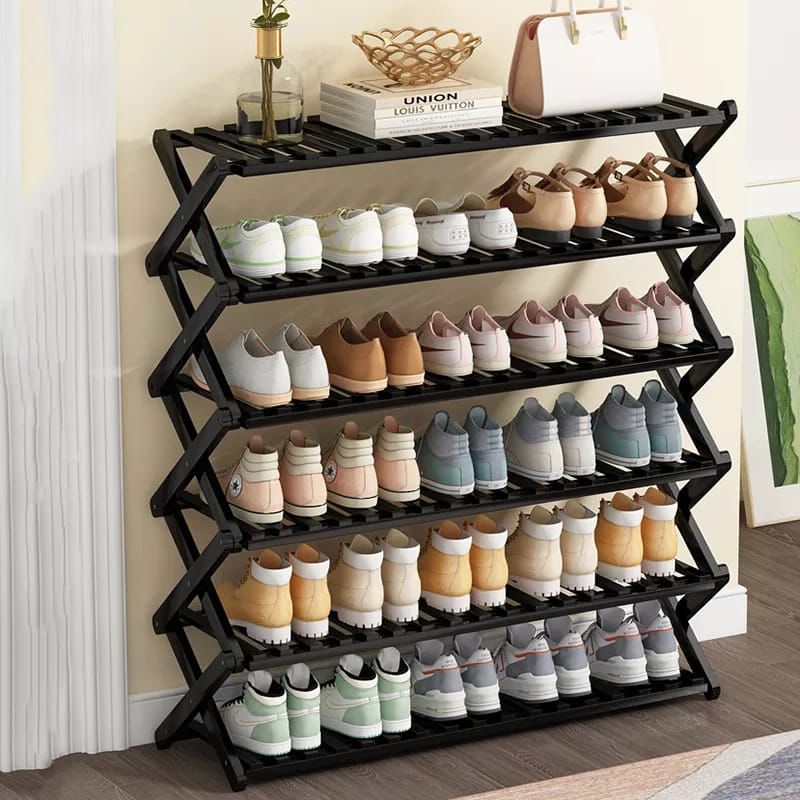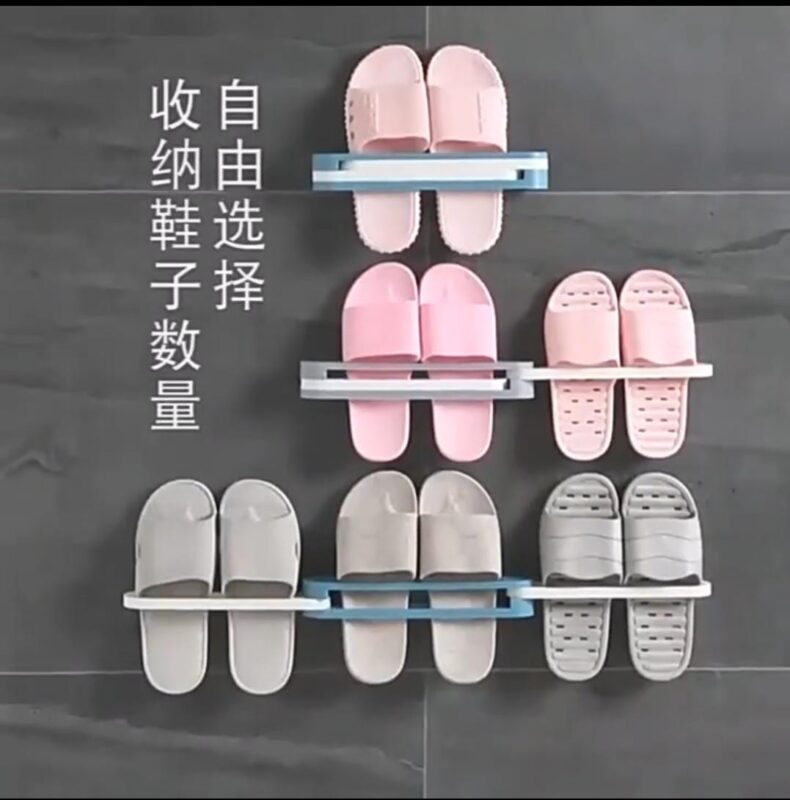Shoe Racks: Everything You Need To Know About Them

Introduction
Shoe racks play a vital role in maintaining an organized and clutter-free home and keeping your shoes tidy, they basically are game-changers. Whether you have a small collection of footwear or a vast array, a good shoe rack not only keeps your shoes tidy but also prolongs their lifespan. In this guide, we’ll explore the various types of shoe racks, their benefits, and how to choose the best one for your needs.
Types of Shoe Racks
In the Kenyan market, there are various types of shoe racks each designed to different preferences and space requirements. But before we jump into that lets discuss what a shoe rack is. A shoe rack is a storage unit designed to hold and organize shoes. It comes in various shapes, sizes, and materials, allowing you to choose one that suits your space and storage needs. The primary purpose of a shoe rack is to keep your footwear organized, easily accessible, and protected from dirt and damage. Here are some of the most types popular:
1. Wooden Shoe Racks

Wooden shoe racks are popular for their natural appeal and durability, crafted from various woods, each with unique characteristics. Oak is robust with a classic grain, ideal for traditional interiors. Pine offers a versatile look, while walnut provides a rich finish.
Advantages include sturdiness, supporting multiple pairs without damage, and seamless integration with various decor styles. Disadvantages include susceptibility to moisture, requiring proper care, and being more expensive than plastic or metal racks. Despite drawbacks, wooden shoe racks are a worthwhile investment, combining functionality and aesthetic appeal.
2. Metal Shoe Racks

Metal shoe racks are a practical storage solution crafted from materials like stainless steel and wrought iron. They offer a sleek aesthetic and robust structure that can withstand heavy daily usage. These racks are known for their durability, longevity, and resistance to wear and tear, making them ideal for extensive shoe storage needs. However, rusting can be a concern, especially in humid environments. Regular maintenance is necessary to prevent damage and ensure the racks remain in optimal condition. Overall, metal shoe racks are an excellent choice for those seeking a durable and modern storage solution.
3. Plastic Shoe Racks

Plastic shoe racks have many benefits. They are light and easy to move, good for any room. They are cheap but still work well, coming in different styles and sizes. Plastic shoe racks are also easy to clean, great for homes with kids or pets. They resist mold and water, well for wet areas like bathrooms. However, they are not as durable as wood or metal racks.
They might break sooner, especially with heavy use. Also, they may not look as fancy as other materials, which could matter to people with stylish homes. Even with these issues, plastic shoe racks are popular for being practical and flexible. Considering the low cost, easy care, and lightness, they are a good choice for many homes.
4. Wall-Mounted Shoe Racks

Wall-mounted shoe racks are a great solution for homes with limited space. They save floor space by hanging on the wall. Installing them is simple but requires basic tools. These racks come in different materials like metal, wood, or plastic. They free up floor space by storing shoes vertically. They can be placed at any height for easy access. However, they need installation by drilling into the wall, which may not be suitable for renters. Also, make sure the wall can hold the weight of the shoes. In conclusion, wall-mounted shoe racks are a practical and stylish way to organize shoes in small spaces.
Summary Comparison
This Comparison aims to simplify your decision by providing a detailed comparison of four main types of shoe racks: wooden, metal, plastic, and wall-mounted
| Type | Aesthetics | Durability | Cost | Maintenance | Space Efficiency |
| Wooden | Classic & Elegant | High | Expensive | Regular | Moderate |
| Metal | Modern & Sleek | Very High | Moderate | Easy | Moderate |
| Plastic | Varied & Colorful | Low | Affordable | Minimal | Moderate |
| Wall-Mounted | Varies | Varies | Varies | Depends | High |
Factors to Consider When Choosing a Shoe Rack
When selecting the perfect shoe rack for your needs, several crucial factors require careful consideration. By taking into account capacity, materials, design, and other functional aspects, you can ensure that your choice meets both your practical requirements and aesthetic preferences.
1. Capacity and Size
First and foremost, assess the number of shoes you need to store and the available space where the shoe rack will be placed. Make sure to choose a shoe rack that can comfortably hold your entire collection. A misjudged capacity can lead to clutter and inefficiency.
2. Material and Durability
Materials play a significant role in the durability and longevity of a shoe rack. Common options include metal, wood, and plastic. Metal shoe racks are robust and can handle substantial weight; wooden racks offer a classic look and sturdy build, while plastic racks are lightweight and affordable. Choose materials that suit your lifespan expectations and maintenance willingness.
3. Design and Aesthetics
The appearance of your shoe rack is equally important, especially if it will be in a visible area of your home. Opt for a design that complements your home decor. Minimalist designs work well in modern settings, while more elaborate constructions may suit traditional spaces. Consider if the style fits the overall look of your living space.
4. Space Availability
Evaluate the available space carefully. Wall-mounted or corner shoe racks can save floor space in smaller areas, whereas freestanding racks might be better suited for larger rooms. Measure the dimensions of the area where you plan to place the rack to ensure a good fit.
5. Ease of Assembly
Depending on your preference and skill level, choose between pre-assembled shoe racks and those requiring assembly. Some models come with straightforward instructions and tools, while others might pose a challenge. Consider your ability and willingness to assemble the rack.
6. Flexibility and Adjustability
Shoe racks with adjustable shelves offer flexibility in accommodating various shoe sizes and shapes. This feature is particularly useful if you frequently acquire new shoes or need to store items other than footwear.
7. Price and Budget
Determine your budget before browsing for shoe racks. While it is tempting to opt for lower-cost options, investing in a higher-quality shoe rack can result in better durability and a more satisfactory experience in the long term.
8. Additional Features
Finally, consider additional features that may enhance the functionality of your shoe rack. Dust covers protect shoes from dirt and discoloration, while wheels provide mobility, allowing you to relocate the rack easily. Such features can add convenience and preserve the condition of your footwear.
By evaluating these factors, you will be well-equipped to choose a shoe rack that fits your specific needs and preferences, ensuring a more organized and aesthetically pleasing living space.
Benefits of shoe racks
A shoe rack serves as an efficient tool for organization in any home.
- One of the most immediate benefits is the decluttering of living spaces. Instead of scattered shoes by the door, a shoe rack ensures that each pair has a designated spot, significantly improving household tidiness.
- Prolonged lifespan of footwear is another notable advantage. Shoes tossed on the floor often get damaged or deformed, leading to unnecessary wear and tear. By using a shoe rack, each pair is stored upright and evenly spaced, maintaining their shape and condition for a longer period.
- The convenience of a shoe rack cannot be overlooked. Enhanced accessibility means that finding the right pair is easy and swift. This becomes particularly useful during busy mornings when time is of the essence. With an organized shoe rack, you can visualize all options at a glance, reducing the time spent on searching for the right shoes.
- Better utilization of spatial resources is a significant benefit of shoe racks. By organizing shoes vertically or horizontally within a designated area, the rest of the hallway or closet space is freed up for other uses. This can be incredibly beneficial in homes where space is at a premium.
- Aside from practical benefits, a shoe rack also contributes to the aesthetic enhancement of a living space. A neatly arranged shoe rack can serve as a subtle yet effective decorative element. Whether by the entrance or within a bedroom closet, it helps maintain a visually pleasing environment.
- Lastly, hygiene and cleanliness are directly promoted through the use of a shoe rack. Shoes, often carriers of dirt and germs, accommodated on a rack, prevent grime from spreading throughout your home. This helps maintain a cleaner, healthier living environment for everyone in the household.
Understanding these benefits underlines the value of investing in the right shoe storage solution. A shoe rack, by offering improved organization, durability of footwear, ease of access, optimized space usage, visual appeal, and enhanced cleanliness, becomes an indispensable addition to any home setup.
Conclusion
In conclusion, adding a shoe rack to your home is more than just about organization. It helps maintain your footwear’s quality and enhances the look of your living space. Throughout this blog post, we’ve covered different types of shoe racks designed for various needs, from compact options to large, multi-tiered structures. We’ve discussed key factors to consider when choosing a shoe rack, such as material, size, capacity, and placement. Using a shoe rack offers many benefits, including keeping your shoes organized, extending their lifespan, and creating a clutter-free environment.
In Kenya, where space is often limited, a well-chosen shoe rack is highly valuable. Whether you live in a city apartment or a suburban home, the right shoe rack can streamline your routine and improve your living experience. Before making a purchase, think about the insights shared here to find a shoe rack that suits you. Feel free to share your own shoe organization experiences and tips with us. Your feedback could help others facing similar decisions. Thank you for taking this informative journey with us. We hope you now have the knowledge to choose a shoe rack that combines functionality and style in your home.
FAQs
When it comes to organizing your footwear, a shoe rack can be a game-changer. However, you might have some questions before investing in one. Here are answers to some frequently asked questions about shoe racks.
How many pairs of shoes can a standard shoe rack hold?
The capacity of a standard shoe rack varies depending on its size and design. Generally, a basic shoe rack can hold between 10 to 30 pairs of shoes. Smaller models may accommodate fewer pairs, while larger, multi-tiered racks can store a significant number of shoes, making them ideal for larger households or shoe enthusiasts.
Can I use a shoe rack for other items besides shoes?
Yes, shoe racks are versatile storage solutions that can be used for more than just shoes. Many people repurpose their shoe racks to hold items such as bags, hats, scarves, and even books. The open design of most shoe racks offers easy access and visibility, making it simple to organize and retrieve various items.
What is the best material for a durable shoe rack?
Shoe racks come in a range of materials, each with its own advantages. Metal shoe racks are known for their durability and strength, making them capable of supporting a substantial weight without bending. Wooden shoe racks offer a classic, sturdy option, perfect for blending into home decor. Plastic and fabric racks are lightweight and easy to move, but may not be as durable as metal or wood options.
Are wall-mounted shoe racks effective?
Wall-mounted shoe racks are highly effective, especially for those looking to save floor space. They can store a decent number of shoes and are great for maintaining an organized entryway or closet. Wall-mounted designs keep shoes off the ground, reducing clutter and making it easier to clean the floor below. However, ensure the wall can support the weight before installation.
How do I choose the right shoe rack for my space?
When selecting a shoe rack, consider the available space and how many pairs of shoes you need to store. Measure the area where you plan to place the rack and choose a model that fits comfortably within those dimensions. Think about the type and size of your shoes; some racks are better suited for different types of footwear. Additionally, consider the material and style to ensure the rack complements your home decor. Durability and ease of assembly should also be key factors in your decision-making process.
